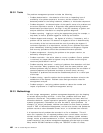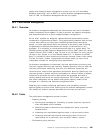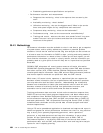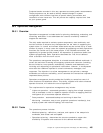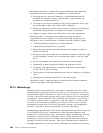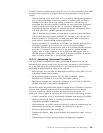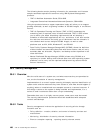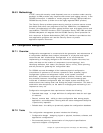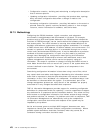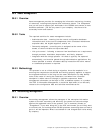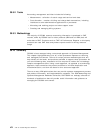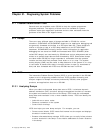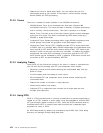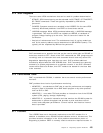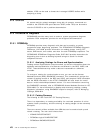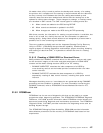•
Configuration creation - building and maintaining a configuration description
that is resource-specific.
•
Updating configuration information - providing vital product data, topology
data, and other configuration data when a change is made to the
configuration.
•
Accessing configuration information - providing information on the actual or
planned resources, specific resource attributes, paths to or from a target
resource, version information for software, and similar data.
30.7.3 Methodology
Configuring the OS/390 hardware, logical connection, and subsystem
environment is straightforward and documented in this book. For example,
products such as HCD and System Automation for OS/390 (which includes the
functions of ESCON manager) can be used to define the hardware configuration
and access paths. The critical element is ensuring that related definitions for
hardware and software components are kept together somewhere. For example,
a DASD volume has a UCB address, I/O device address, and volume name. It is
located in a particular hardware device. It is accessible through one or more
control units (and associated ESCON ports). It may be dedicated to a particular
workload or business organization. It is part of a pool used by a particular
storage class. Managing the configuration means pulling this information
together so that these relationships are known and understood, and so that
systems management activities can be carried out properly using this
information. The scope of a problem or change involving that DASD volume is
much better known when one can see all the ″pieces″ of the system where the
volume is defined in some fashion. This applies to all components in the
environment.
Centralizing configuration information is best done using a set of files, which
may contain both text tables and diagrams. Maintaining this information across
these files is important so that the other disciplines have access to accurate
information. In fact, if the ″attributes″ of a component - the different ways it can
be identified or connected within the system - are documented, part of the
change management process can verify that all of the attributes are properly
accounted for in any changes that affect that component.
TME 10 Information Management provides support for combining configuration
definitions for components within its repository; it can be customized to support
any attributes for a component that the installation desires. This allows not only
direct access to configuration information, but indirect access through change
and problem activities; for example, if a problem occurs with a component, TME
10 Information Management can automatically look up the component′s
configuration record and show what other aspects of the system may be
impacted by the problem.
As the environment grows to multiple MVS images it becomes even more
important to identify and maintain multiple configurations consistently. Where
possible system definitions should be consistent; when they cannot be, a
consistent naming convention should be used.
470 VSE to OS/390 Migration Workbook



